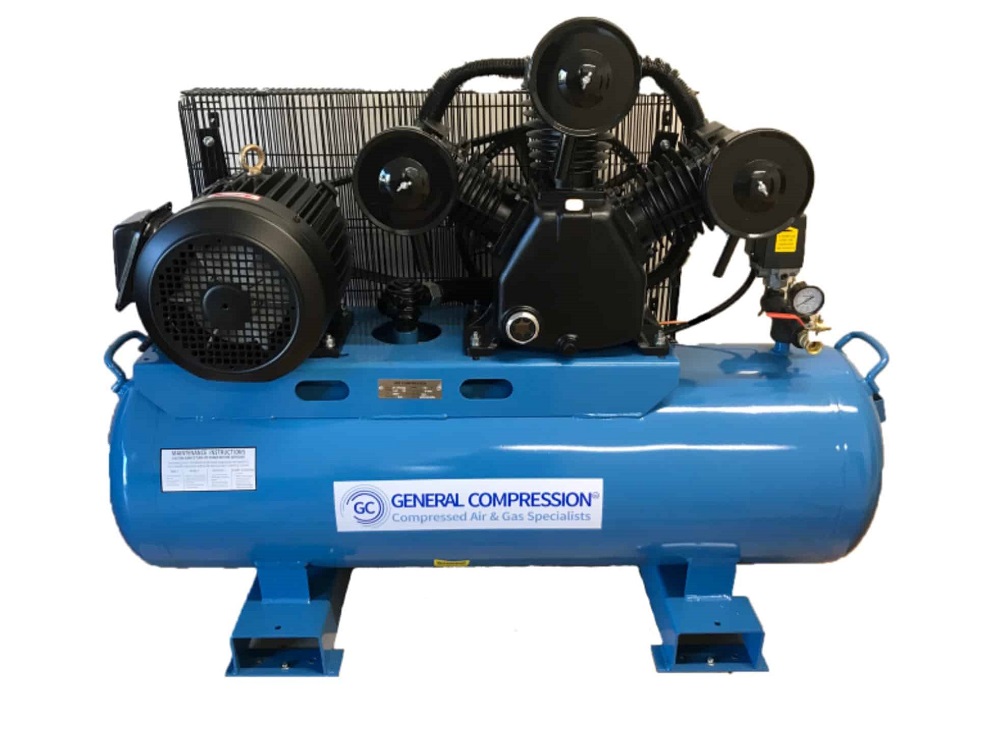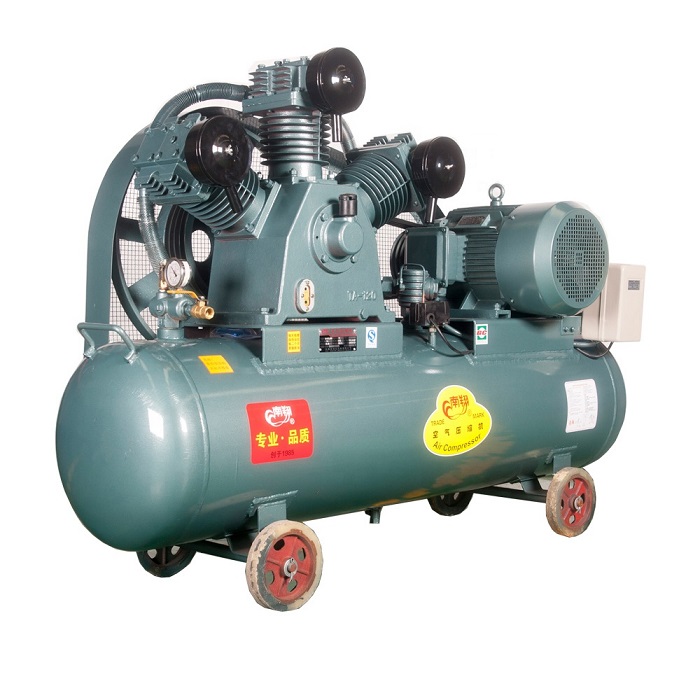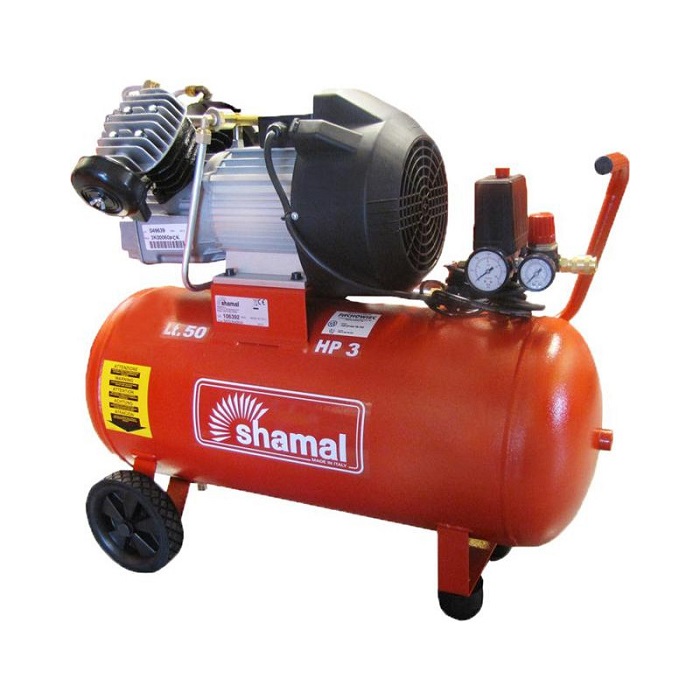A compressor which is a mechanical device that increases the pressure of a gas by reducing its volume is of great importance in many small and big business processes. Therefore, expanding your knowledge of them is a must especially when you deal with them on a daily basis. In this article, Linquip has provided useful information on piston compressors. So read on and enjoy learning effortlessly!
What are Piston Compressors?
A reciprocating compressor (piston compressor) is the most seasoned and most common of all mechanical compressors. It is accessible in single-acting or double-acting, oil-lubricated or oil-free variations, with different numbers of barrels in several setups. With the special case of exceptionally little compressors having vertical barrels, the V-configuration is the foremost common for little compressors. On double-acting, huge compressors the L-configuration with vertical low pressure and horizontal high-pressure cylinder offers colossal benefits and has ended up being the foremost common plan.
What are oil-free Piston Compressors?
Oil-free cylinder compressors have piston rings made of PTFE or carbon, and then again, the cylinder and cylinder divider can be profiled (toothed) as on maze compressors. Bigger machines are prepared with a crosshead and seals on the gudgeon pins, and a ventilated middle piece to anticipate oil from being exchanged from the crankcase and into the compression chamber. Littler compressors frequently have a crankcase with an orientation that is forever fixed.
Another Type of Compressor
If your operation requires a steady compressed air supply, you ought to consider a rotating screw air compressor. Not at all like the piston compressor, are rotary screw air compressors utilized for any operations that require up to a 100% persistent obligation cycle and are built for a long lifetime of solid operation. Such compressors are an extraordinary elective for the cylinder units and there are variously available, depending on your needs and budget. One of those choices is the capacity to coordinate a dryer into the bundle, which is perfect for applications that require clean and dry air.
How Does a Piston Compressor Work?
You’ll discover air compressors utilized in a wide extend of situations—from corner gas stations to major fabricating plants. And, increasingly, air compressors are finding their way into domestic workshops, basements, and carports. Models measured to handle each work, from expanding pool toys to controlling instruments such as nail weapons, sanders, drills, affect wrenches, staplers, and splash weapons are presently accessible through nearby domestic centers, instrument dealers, and mail-order catalogs. Here you can find information about piston compressor parts and then you will see how a piston compressor works.
The enormous advantage of air power is that each instrument doesn’t require it possesses a bulky engine. Instep, a single engine on the compressor changes over the electrical vitality into motor vitality. This makes for light, compact, easy-to-handle instruments that run discreetly and have fewer parts that wear out.
Whereas there are piston compressors that utilize turning impellers to create air pressure, positive-displacement compressors are more common and incorporate the models utilized by property holders, woodworkers, mechanics, and contractors. Here, air pressure is expanded by decreasing the measure of the space that contains the air. Most of the compressors you’ll run over do this work with a reciprocating cylinder.
Like a little inner combustion motor, a routine piston compressor features a crankshaft, an interfacing pole and cylinder, a barrel, and a valve head. The crankshaft is driven by either an electric engine or a gas motor. Whereas there are few models that are comprised of fair the pump and engine, most compressors have an air tank to hold an amount of air within a preset pressure extend. The compressed air within the tank drives the air tools, and the engine cycles on and off to consequently keep up pressure within the tank.
Ordinary compressors come in 1- or 2-cylinder adaptations to suit the prerequisites of the devices they control. On the homeowner/contractor level, most of the 2-cylinder models work a bit like single-cylinder forms, but there are two strokes per insurgency rather than one. A few commercial 2-cylinder compressors are 2-stage compressors–one-cylinder pumps air into a moment barrel that advances increments pressure.
Compressors utilize a pressure switch to halt the engine when tank pressure comes to a preset limit–about 125 psi for numerous single-stage models. In this manner, the airline will incorporate a controller simply set to coordinate the pressure prerequisites of the device you’re employing. A gage sometime recently the controller screens tank pressure and a gauge after the controller screens air-line pressure. In expansion, the tank features a security valve that opens in case the pressure switch breakdowns. The pressure switch may join an unloaded valve that decreases tank pressure when the compressor is turned off.
Numerous articulated-piston compressors are oil greased up. That’s, they have an oil shower that splash-lubricates the orientation and barrel dividers as the wrench pivots. The cylinders have rings that offer assistance to keep the compressed air on best of the cylinder and keep the greasing up oil absent from the air. Rings, in spite of the fact that, are not totally compelling, so a few oils will enter the compressed air in airborne shape.
Having oil in the air isn’t essentially an issue. Numerous air devices require oiling, and inline oilers are regularly included to extend a uniform supply to the device. On the downside, these models require normal oil checks, intermittent oil changes and they must be worked on a level surface. Most of all, there are a few apparatuses and circumstances that require oil-free air.
Splash portray with oil within the airstream will cause wrap up issues. And numerous modern carpentry air devices such as nailers and sanders are outlined to be oil-free so there’s no chance of fouling wood surfaces with oil. Whereas arrangements to the airborne oil problem include using an oil separator or channel within the airline, a distant better thought is to utilize an oil-free compressor that employments forever greased up orientation input of the oil shower.
A variety of automotive-type piston compressor could be a demonstration that uses a one-piece piston/connecting bar. Since there’s no wrist stick, the cylinder inclines from side to side as the offbeat diary on the shaft moves it up and down. A seal around the cylinder keeps up contact with the barrel dividers and avoids air spillage.
Where air necessities are unassuming, a diaphragm compressor can be compelling. In this plan, a membrane between the cylinder and the compression chamber seals off the air and avoids spillage. You can find more about piston compressors on Linquip website. Now it’s your turn to write about your experiences with compressors in comments and if you have any question, don’t hesitate to ask.
Buy Equipment or Ask for a Service
By using Linquip RFQ Service, you can expect to receive quotations from various suppliers across multiple industries and regions.
Click Here to Request a Quotation From Suppliers and Service Providers
Read More on Linquip
- What are Hydrovane Compressors?
- Piston compressor vs screw compressor; Which One Should I Buy?
- Everything You Need To Know About Different Types Of Compressors
- How an Air Conditioners Compressor Work?
- 3-phase air compressor: what is it and how to wire it
- The Essential Guide to the 4 Types of Air Compressors
- Difference Between Air Compressor and Air Pump







Always refreshing to see someone offering shared experience and knowledge! Thank you
Thanks a lot for your consideration
We encourage you to visit other posts in our blog.